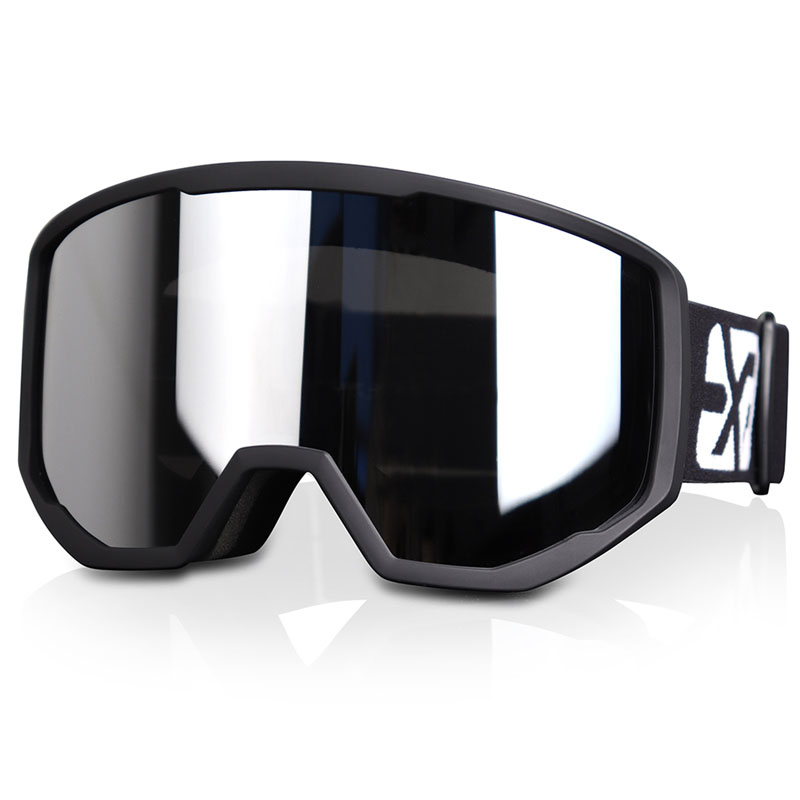How to Choose the Perfect Ski Goggles for Every Adventure?
2025-08-19
Skiing and snowboarding are exhilarating winter sports that demand both skill and the right equipment. Among the essential gear, ski goggles play a pivotal role in enhancing performance, protecting your eyes, and ensuring safety on the slopes. But how do you choose the perfect pair of ski goggles that meet your needs, style, and environmental conditions? This comprehensive guide explores everything you need to know about ski goggles—from design and lens technology to fit, comfort, and care—so you can make an informed choice for your next adventure.
Understanding Ski Goggles and Their Importance
Ski goggles are more than just a fashion accessory—they are crucial for vision clarity, eye protection, and overall performance on the slopes. The key functions of ski goggles include:
-
UV Protection: High-altitude environments expose your eyes to intense UV rays. Ski goggles block harmful rays and prevent long-term eye damage.
-
Anti-Fog Technology: Moisture from breath or sweat can fog up lenses. Modern ski goggles use double-layered lenses and anti-fog coatings to maintain clear vision.
-
Enhanced Visibility: Different lens tints optimize visibility in various light conditions, from bright sunny days to overcast or snowy weather.
-
Impact Protection: Durable materials protect your eyes from wind, snow, debris, and accidental collisions.
Ski goggles are designed to complement helmets, integrate seamlessly with other gear, and adapt to multiple skiing environments. Choosing the wrong goggles can lead to discomfort, poor visibility, and even safety risks. Understanding these fundamental aspects ensures you select the right pair.
Key Features and Product Parameters of Ski Goggles
When selecting ski goggles, several parameters determine their quality, fit, and performance. Below is a detailed breakdown of the most critical factors:
| Feature | Description | Benefit |
|---|---|---|
| Lens Type | Spherical, cylindrical, or toric | Spherical lenses reduce distortion; cylindrical lenses are lightweight; toric lenses combine clarity and peripheral vision |
| Lens Tint/Color | Yellow, amber, rose, dark gray, mirrored | Enhances contrast, visibility, and reduces glare depending on weather conditions |
| UV Protection | 100% UV400 protection | Blocks harmful UVA and UVB rays, protecting eyes from long-term damage |
| Anti-Fog Coating | Hydrophilic coating or double-layer lens | Prevents condensation and maintains clarity in varying temperatures |
| Ventilation | Top, bottom, or side vents | Ensures airflow to reduce fogging and heat buildup |
| Frame Material | Flexible TPU, polycarbonate | Provides comfort, durability, and impact resistance |
| Helmet Compatibility | Universal or specific helmet fit | Ensures seamless integration with most ski helmets |
| Strap Design | Adjustable silicone strap | Offers secure fit, prevents slipping during intense activity |
| Peripheral Vision | Wide field of view (FOV) | Improves safety and spatial awareness |
| Lens Interchangeability | Quick-swap lens system | Allows adaptation to changing weather conditions |
Understanding these features helps skiers and snowboarders select goggles tailored to their specific needs, from recreational slopes to professional competitions.
How to Choose the Right Ski Goggles for Your Needs
1. Consider Your Skiing Environment
Light conditions, weather patterns, and slope types influence the ideal lens choice. For example:
-
Sunny Conditions: Dark tints or mirrored lenses reduce glare.
-
Low-Light/Cloudy Days: Yellow, rose, or amber lenses improve contrast.
-
Mixed Conditions: Photochromic lenses adapt to changing light automatically.
2. Prioritize Fit and Comfort
Proper fit prevents discomfort and fogging:
-
Ensure the goggles form a snug seal around your face without pinching.
-
Foam padding should contour your face and provide insulation.
-
Adjustable straps allow secure attachment over helmets.
3. Evaluate Lens Technology
Advanced lenses significantly enhance performance:
-
Polarized Lenses: Reduce glare from reflective snow.
-
Anti-Fog Coatings: Essential for maintaining visibility during high-intensity activity.
-
Double-Layered Lenses: Prevent temperature-induced condensation.
4. Additional Considerations
-
Ventilation: Proper airflow reduces fogging and moisture buildup.
-
Durability: Flexible, impact-resistant frames withstand harsh environments.
-
Peripheral Vision: Wide FOV is critical for high-speed skiing and safety.
FAQ: Ski Goggles Common Questions
Q1: How do I prevent my ski goggles from fogging up?
A1: Choose goggles with double-layered lenses, anti-fog coatings, and proper ventilation. Ensure your helmet and goggles allow airflow without gaps where warm breath can enter. Avoid wiping the inside of lenses with your gloves as it may damage the coating.
Q2: Can ski goggles fit over prescription glasses?
A2: Yes. Look for OTG (Over-the-Glasses) compatible goggles, which have deeper frames and ventilation systems designed to accommodate glasses without compromising comfort or fit.
Why TO-MAX Ski Goggles Stand Out
At TO-MAX, we focus on combining innovation, style, and performance in every pair of ski goggles. Our products integrate cutting-edge lens technology, ergonomic frame design, and advanced anti-fog systems to ensure clear vision, maximum comfort, and durability for all winter sports enthusiasts. Whether you are skiing on sunny alpine slopes, navigating foggy trails, or competing in professional races, TO-MAX ski goggles provide the clarity, protection, and confidence you need.
With a wide range of lens tints, interchangeable lens systems, and universal helmet compatibility, TO-MAX is committed to delivering ski goggles that meet the highest standards of safety and performance. Explore our collection today and elevate your winter adventures to a whole new level.
For further inquiries or to explore our products, contact us to get personalized recommendations and support.




